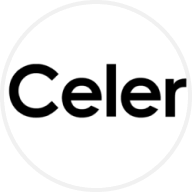
Cours du Celer Network

Infos sur le marché du Celer Network
Cap. boursière = offre en circulation × dernier cours

Prix Celer Network aujourd’hui en USD
Conversions de Celer Network populaires
| 1 CELR en USD | 0,0091570 $ |
| 1 CELR en EUR | 0,0084540 € |
| 1 CELR en PHP | 0,52423 ₱ |
| 1 CELR en IDR | 151,83 Rp |
| 1 CELR en GBP | 0,0070674 £ |
| 1 CELR en CAD | 0,013129 $ |
| 1 CELR en AED | 0,033634 AED |
| 1 CELR en VND | 234,01 ₫ |
À propos du Celer Network (CELR)
- Site web officiel
- Livre blanc
- Github
- Explorateur de blocs
FAQ Celer Network
Achetez facilement des jetons CELR sur la plateforme de cryptomonnaie OKX. Le terminal de trading au comptant d’OKX inclut la paire de trading CELR/USDT.
Vous pouvez aussi acheter des CELR avec plus de 99 monnaies fiduciaires en sélectionnant l’option Achat express. D’autres cryptos populaires, comme Bitcoin (BTC), Ethereum (ETH), Tether (USDT) et USD Coin (USDC) sont également disponibles.
Vous pouvez également échanger vos cryptomonnaies existantes, notamment XRP (XRP), Cardano (ADA), Solana (SOL) et Chainlink (LINK) contre des CELR, sans aucuns frais ni glissement de cours, grâce à OKX Convert.
Pour consulter les prix de conversion estimés en temps réel de monnaies fiduciaires, comme le dollar américain, l’Euro, la livre britannique, etc., en CELR, consultez le Calculateur convertisseur de cryptos OKX. La plateforme d’échange de cryptos à liquidités élevées d’OKX garantit les meilleurs cours pour vos achats de cryptos.










